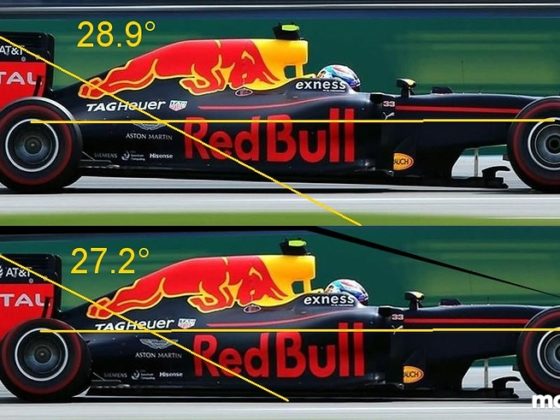
To install the Fluidampr we first had to remove the stock pulley. We thought it was going to be easy because Subaru engines don’t have tapered crank snouts and use a dowel to keep the damper from spinning on the crank, because of this a crank puller isn’t needed, just removing the bolt. However our equal length, long tube Nameless headers took up a lot of room at the front of the engine and got in the way. We could crack the crank bolt loose but not remove it. So we had to unbolt the header. To unbolt the header, we had to remove our splitter and belly pan, turning our quick and easy job into something more involved. With a stock car, this is an easy install.

To completely remove the Nameless header, we would have to remove the fans and radiator but we were able to unbolt it from the engine and slide it around enough to get the crank bolt out.

Thus we were able to finagle the stock pully out and get the Fluidampr in place and bolted down. Here we are torquing the crank pully before putting the rest of the car back together. If you have a stock car or a header that is more of a conventional shape that doesn’t go in front of the engine, this is a lot easier.

Here is the Fluidampr in place and ready to run. You can really see how the Nameless header makes things more of a tight fit here.




8 comments
Is it worth putting one of these on a 4g63 from an evo 8/9?
We have one on ours!
I have had one on my Evo IX for a year now.
These are one of those upgrades that’s actually beneficial to your car. I installed a Fluidampr on my 2013 FR-S and it really smoothed out the revs overall and gave the engine a smoother feel. Definitely worth doing.
Did it actually get rid of the 6500rpm vibration that the driver felt? The plots don’t look like there’s a huge amount of torsional vibration at 6500rpm, certainly not a peak.
I wonder if it could be supercharger mounting stiffness. Look at how much structure there is on anything front end accessory drive related from the factory. A water pump or alternator has a relatively huge amount of webbing/structure in the block to stop it from vibrating. 2EO at 6500rpm is 216Hz, trying to give something heavy a higher than 216Hz natural frequency is tricky, and a heavy supercharger is likely to need a HUGE amount of mounting stiffness to get above that. By way of comparison, even OEM cast aluminium inline 4 manifolds can struggle to get a high enough natural frequency even though they’re only supporting themselves and a relatively light throttle body. Obviously this flat 4 one is helped by the fact it isn’t cantilevered, but it’s still a lot of stiffness that is required.
Yes you can see it on the plot!
Do these style dampers deal well with the quick changes in RPM? For instance when you go in with two feet for a panic stop or a rev-matched down shift?
That’s a very good question, we have used these for years in very high power drift motors that see a huge rpm variation very quickly and they work well.